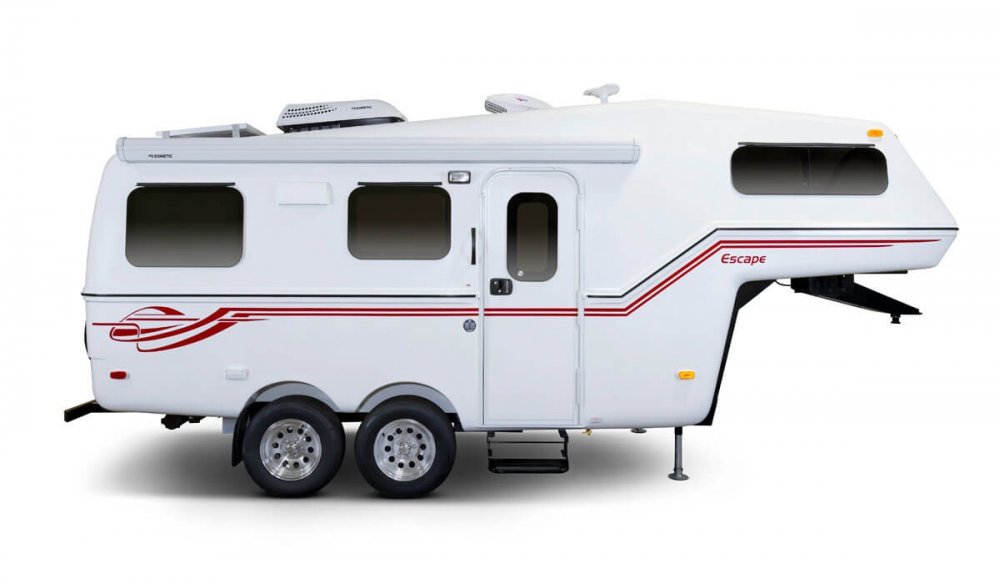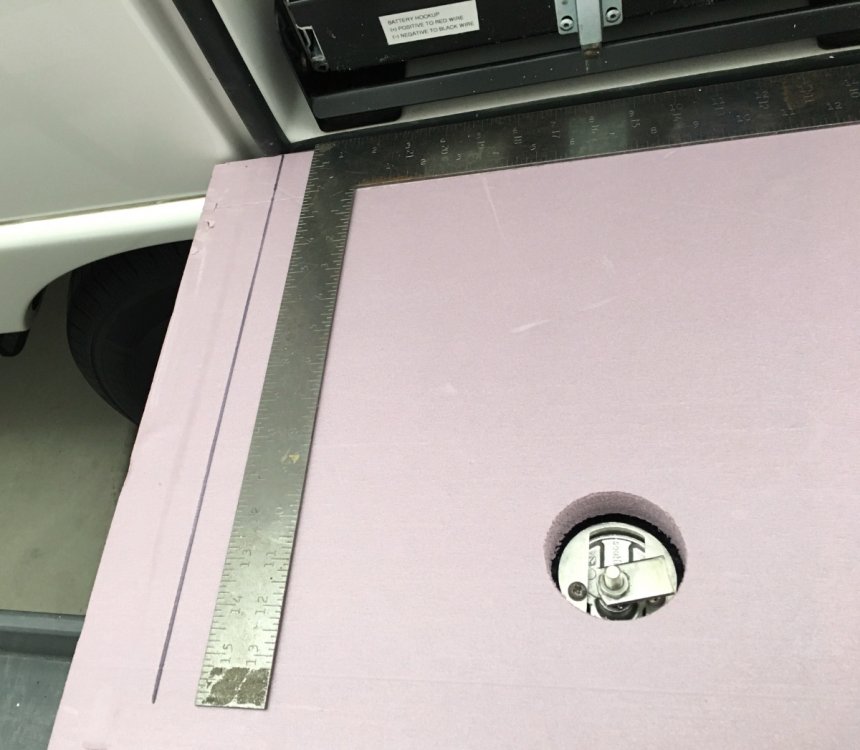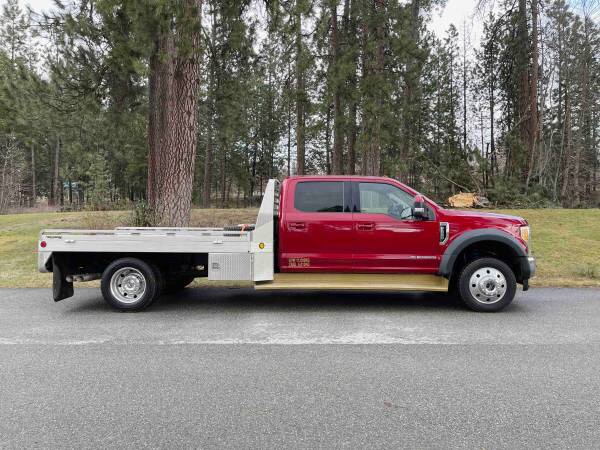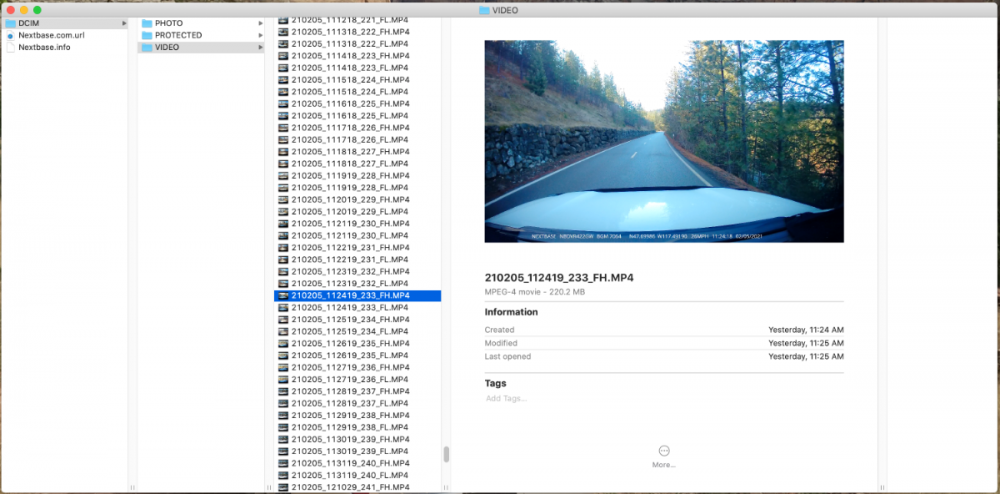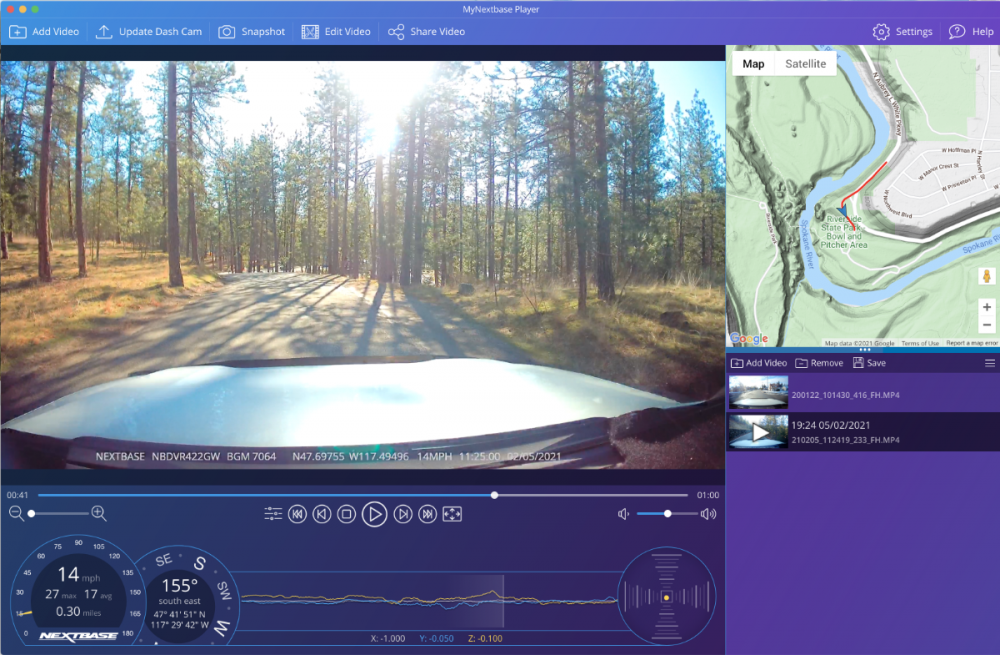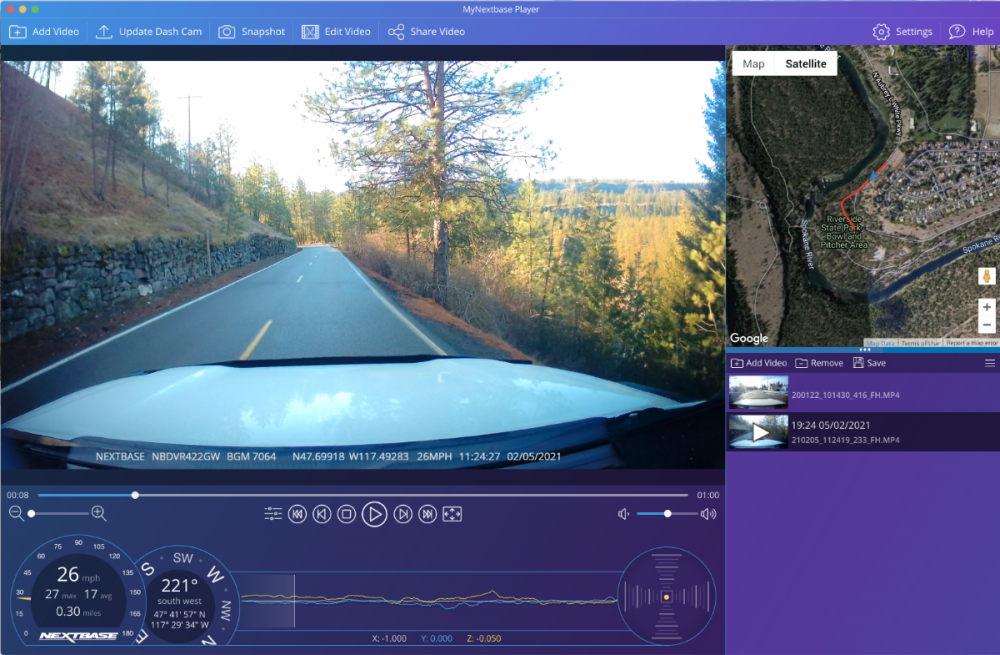-
Posts
5,759 -
Joined
-
Last visited
-
Days Won
243
Everything posted by John E Davies
-
Are you 100% positive the sound comes from the chain brackets? Are they fully tight on the frame, including the little grub screws? These older hitches typically get embarrassingly loud “Spawn of Satan” shrieks and groans when water and debris get down inside the friction cone, but that sound happens only when turning.. The new updated ones do not seem to have that problem. So far. I agree about putting grease on the chain links, at least try it for one trip to see if the sound goes away. If the sound remains, then the source is elsewhere. I do grease my chain adjuster threads and under the washer where it contacts the red bushing, mainly so the nuts turn easier. I have never put any grease further forward. Good luck. John Davies Spokane WA
-
Three camping seasons now with the Pur, and it continues to impress me. It is an inexpensive solution. Try it for a while, and if you feel the need for a more intensive setup for the trailer, use the pitcher at home or gift it to a relative. John Davies Spokane WA
-
Grease “as needed”, use your judgement. Keep in mind that the typical travel trailer may never go over a few hundred miles each year. Annual service would be prudent, base the interval on miles driven (keep a travel log) and most importantly, the weather conditions. If you tow in heavy rain or on soaked highways, or on wet forest roads, the water blast will literally wash the grease away. I grease in the late fall, or “about” every 6000 miles. I would push it to 10,000 on a long trip. I never (intentionally) tow in the rain. John Davies Spokane WA
-
You drive out the rear seal and bearing to service it (clean, inspect, and grease it) and replace the seal with a new one every time. If either bearing is bad, you drive out the races and install two new bearings and races. Never change just a bearing or race, they are matched sets. Never change only one bearing set if it is bad, the metal particles have already damaged the other set. You can carry a complete spare hub assembly with bearings, it would be very awkward and heavy. When you install a new drum, the worn shoes will not match the curve of the new drum, so that brake will never work right. If you replace a drum, both drums on that axle should be replaced AND both brake assemblies. $$$$ This is why disk brakes make so much more sense.... they have none of these “mismatched” wear pattern issues, and are super easy and inexpensive to service. John Davies Spokane WA
-
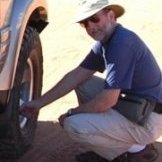
F550 Super Duty 4wd with aluminum flatbed...!
John E Davies replied to John E Davies's topic in General Discussion
I guess I should have copied the entire ad. Yes, 4wd, garage kept and pampered. I don’t think an LE2 hull would be practical, it would stick out the back 7 feet. You would have to build a huge bumper extension to be legal. And it would look pretty strange. How about an Escape fifth wheel hull? John Davies Spokane WA -
Keep in mind that open cell foam (like a sponge), or a towel, or anythjng that breathes, will provide very little insulation. The foam used around water pipes is fine.....The idea is to block the airflow and associated heat transfer, so a closed cell foam (semi rigid) will always have a much better R value. The metallic bubble insulation that Oliver uses is R1. I haven’t finished this yet, but I am making door insulation panels from 1” R5 rigid foam board. The battery compartment door had zero insulation and eight 1” vent holes, so it will really make that compartment less drafty, for my new lithium batteries. I am not sure how it will turn out, I may scrap the idea - here is an early pic. John Davies Spokane WA .
-
I am pretty, maybe, sort of sure the hose threads are like in your kitchen or shower hose at home, 1/2” pipe thread, but with a fat rubber washer to ensure no leaks and no need for pipe thread sealer. I think this would work to cap off the shower hose connection, inside the trailer. But no guarantees, you would have to test the fit. https://www.amazon.com/Joywayus-Brass-Female-Rubber-Gasket/dp/B08G8KJ641 A typical 1/2” FPT cap, for residential plumbing, is a lot longer with no gasket. It could work, or it might bottom out before the threads got tight. You would need some rubber gaskets, and might have to stack several inside the end. https://www.homedepot.com/p/Everbilt-1-2-in-FIP-Brass-Cap-Fitting-802159/300095968 You can do some testing and report back to us. 😁 You could mask up and wander down to Ace Hardware with your shower head, and see if they can tell you what works. Removing the shower hose and head entirely will give more space for some insulation inside that little cavity, to pack around the knobs.... John Davies Spokane WA
-
7500 pounds rated ball, at a minimum. That gives you some reserve strength. The stronger the ball, the less you will worry if you find yourself on a potholed forest or ranch road (or even some National Park “main” roads, like in Glacier NP). GVWR for an LE2 is 7000 pounds.Some owners have reported a fully loaded weight higher than that, I do not recommend it. This one works great, or pick another similar brand. The longer shank also allows you to stack 1” inside diameter HARDENED Grade 8 flat washers to raise it up in small increments if you want to fine tune the height. .... https://www.etrailer.com/Trailer-Hitch-Ball/Curt/C54CR.html John Davies Spokane WA
-
A mattress can be tilted 90 degrees and pushed out toward the wall, that will give enough clearance to lift and pull out the access panel underneath it. My mattresses are 10 inches thick, and it works for them. It does help a LOT if the bed is not fully made up with sheets, blankets, bedspread, comforter and dog on top. I sleep in a cool weather bag with liner, there is just a fitted protective cover over the mattress. Don’t be afraid to carefully shift an air duct out of the way, just do not abuse it or poke a hole in it. John Davies Spokane WA
-
I knew the effect of leaving both valves open in summer, but I never considered how that “operator error” could be intentionally used to warm that area during a sudden cold snap, if the hot water system was still active... We really need a central resource or perhaps FAQ threads pinned in place at the top of each section of the forum, with a continually growing list of Ollie-specific tips, tricks and best practices, like this one. I think it is a gem. Thank you! John Davies Spokane WA
-

Furnace Report and Bathroom Heat
John E Davies replied to Ray and Susan Huff's topic in Mechanical & Technical Tips
Hmmm, it seems to me that somewhere in the Owners Manual it says that the husband was supposed to get up and crank up the thermostat 30 minutes before wakeup time..... at least, my wife has told me that several times. I am the one who reaches up to turn on the water heater switch, but I can reach that without getting up. Our thermostat is the old fashioned kind, where the husband IS the remote. John Davies Spokane WA -
I am not sure what your intent was with that last part...... but leaving both the hot and cold valves turned on, and the shower head valve closed, will cause the hot water circuit to bypass into the cold water one, if the water heater is running. That will make it impossible to get hot water out of any of the other faucets - just tepid warm water - but it will also keep the outside shower parts warm. Was that what you meant? Because it is actually quite ingenious, as long as you don’t want to take a hot shower in the bathroom. But taking off the outside shower extension hose and capping the connection there at the valves would be even better.... Has anybody seen a sturdy cap with rubber seal that matches those hose threads? That way you would have enough extra room inside that little compartment to shove a little zip bag full of insulation. John Davies Spokane WA
-
My opinion is that if all the water lines have water in them, something may freeze. If you can get to a Walmart or any RV store ASAP, buy a winterization hand pump and a couple of gallons of RV pink antifreeze. Pump six ounces of antifreeze through each of the FOUR outside ports. That should be enough to get you through a couple of cold nights. Keep the hot water heater going, or you must bypass and drain it completely. If you can’t find the antifreeze and pump locally, and have access to an air compressor and adapter air fitting, you can screw that on and use 60 psi air to blow those lines out. It is not nearly as safe and reliable, but better than leaving them full. Worst case, if you are at a campground, beg a neighbor or the camp host to help you use his pump and antifreeze, and repay him for the AF, and thank him heartily. You need to know how to do this stuff, if you don’t take these minimal steps it may result in broken parts and an expensive repair bill. Especially if you run out of propane or the furnace fails at midnight..... Ideally you should be plugged in and have an electric backup box heater handy, just in case. Boondocking with no shore power is more risky, unless you also have a generator you can fire up to run that heater.... Opening up a few access panels will help with distributing heat underneath them, tho that won’t be needed if the furnace is going. Make sure at least one of your propane tanks is completely full, you will go through a lot more gas than you are used to using. John Davies Spokane WA
-

Tire Rotation (split from tire pressure
John E Davies replied to Landrover's topic in General Discussion
Tandems do indeed wear tires. They do not simply roll along... the further the distance between axles, the worse the effect. Semi trucks really have issues, and they can literal pop a tire off the rim if they encounter a low curb. Here is a double axle RV turning hard. Trailer axle and tire flex while turning John Davies Spokane WA -
I ran across this stunning one owner, garage kept F550 with a factory installed 11 foot flatbed. I think it would probably tow three Ollies without sweating, but OTH you could remove your LE1 hull and bolt it down to the truck bed. If you also removed the headache rack, it would stick out the back perhaps 2 feet, but it would be pretty cool IMHO. Put a big horizontal propane bottle underneath the bed, along with a lot of extra water tanks and storage. No more worries about hitching up.... I recall seeing an Elite 1 that was added to a longer commercial Mitsubishi FUSO bed. It looked bizarre, but this truck would definitely work for me. 2017 Ford F-550 Lariat Powerstroke Diesel Flatbed 4WD - $65,000 John Davies Spokane WA
-
The cracked cap might be due to an irregularity on the hub or inside the wheel opening. It just sort of floats around there, in a recess. I took all mine off and put them away in a spares box on my garage shelf, to give to the next owner.. I prefer to be able to see and touch the axle caps, in case one falls off, or leaks, or the hub is getting hot. You can’t detect any of those problems with it completely hidden by a purely cosmetic chrome doodad. I recall that one owner removed his wheel, only to find that the steel grease cap had been rattling and spinning around inside the cap. It makes for a mess, like metal shavings, especially since a lot of the grease will also escape from the bearings. I am sure it also sounds pretty strange to an onlooker as you drive by. “Bonkety bonk dink bump”. At some point the steel cap could wear a groove completely through the chrome one, and then you will have to replace it and the metal contaminated bearings and races. John Davies Spokane WA
-

POLL: Balance your trailer tires.
John E Davies replied to John E Davies's topic in Mechanical & Technical Tips
Mine is Hull 218, early 2017. I don’t know any way to post a Poll question that allows you to specify an exact time or model. Having a whole bunch of questions - “was it a 2018? Was it an elite? - just confuses the heck out things. The more questions you add, the weirder the results become. Ideally it would just be two questions. Can you suggest a good way? When I was building the Poll, I actually considered adding Answer 4: “I don’t care“, but I realized the first question probably covers that one. It indicates that the owner knows that they are not balanced but won’t do anything about it... That is really why I asked for follow up comments, to see when changes were made, if any. So far it looks as if it is a total crap-shoot (roll of the dice) whether it was done before delivery, or not. There is not yet any pattern that I can see. John Davies Spokane WA -
Bill, by design the tanks are very low and long, and the openings are toward the back, so having the tongue raised a few inches helps with getting all the fluid out. John Davies Spokane WA
-

Tire Rotation (split from tire pressure
John E Davies replied to Landrover's topic in General Discussion
That is excellent advice. Those are the tires that tend to drag on concrete curbs if you are parallel parking on a city street, and they often get hit harder by potholes or by taking turns too tight, since it is harder for the driver to see them. And nasty debris tends to get tossed toward the right side of any road and accumulate there; whenever I experience a flat it often happens on that side. The front tire will flip up a nail or screw, and it stabs into the next tire behind. This is why carefully inspecting the entire tread is important. If you find it soon enough, a short screw can be pried out before the head wears off and it gets driven through the plies by road forces. At that point you have a leak and the tire will have to get patched inside, and hopefully it will be repairable. If it is too close to the sidewall, the shop may refuse to do it. I have extracted many little screws or nails over the years, those usually are picked up around areas where lots of new houses are being built. The contractors let them spill out of their trucks🙄 and I try hard to not drive on those streets. They are deadly for bike tires too. A contractor usually won’t bother to pick stuff up if he drops it in the dirt in the street! When my house was completed, I bought a shop floor bar magnet and pushed it around the foundation many times. I collected several pounds of screws, nails and steel clips John Davies Spokane WA -

POLL: Balance your trailer tires.
John E Davies replied to John E Davies's topic in Mechanical & Technical Tips
It is dead simple to add a Poll to a thread YOU started, just put one at the top of this thread, and add “POLL” at the beginning of the title to catch the eye. IMHO if you put too many questions in one poll it just becomes confusing and harder to interpret the results. Keep it preferably just two or three pertinent questions, and ask the member to answer only one of them. That way the graph shows a true percentage distribution, which doesn’t happen if people can answer many questions. I would prefer not to intermingle the threads, for this reason. .John Davies Spokane WA -

Tire Rotation (split from tire pressure
John E Davies replied to Landrover's topic in General Discussion
I rotate all five, every 5000 miles approximately. Spare to LF, LF to LR, LR to RF, RF to RR, RR to Spare....Because I can - it is what I do with all my vehicles, unless they have directional tread snow tires. I pull them off, pressure wash and inspect the back (inside) for tire cuts or rim damage, look for and remove any metal objects from the tread, clean and wax the wheels, on both sides. My trailer is normally indoors out of the sun, so weather damage is absolutely minimal, I doubt if I will have to replace them due to that reason. Tandem trailers do indeed wear the tread fast, whenever you do tight turns on pavement. My driveway gets full of rubber stripes by the end of summer. I probably would not bother with an LE1 because that wear does not happen, but you still need to look at the hidden areas for problems. Go to a boat launch sometime, watch for a guy with a heavily loaded triple axle trailer doing tight turns before putting the boat into the water. The front and rear axles slide almost sideways! It is more than a little scary to see. .John Davies Spokane WA -
EDIT: I changed the wording of the second question slightly to also indicate that you intend to balance them. 02/08/21 In 2017 I stopped the second day of my delivery trip to have all five of them high-speed spin balanced. I could not actually tell that anything bad was going on, but they all took more than a few ounces of lead. At least then I knew that any imbalance of the very heavy LT truck tires was not contributing to shaking the trailer and her contents. Do the new Ollies come with balanced tires? Look for wheel weights around the rims, inside and/or outside. If they are not there, get them fixed, because this isn’t very good. One wheel with no weights might be Ok if the others have them, or it might have slung it off. If yours WERE factory balanced, please add a comment so that we can see about when this change occurred. Thanks, John Davies Spokane WA
-
I run mine at 42 psi with an approximate trailer weight of 6000 pounds. The pressures typically rise several psi when towing. The temperature rises about 4 to 6 degrees F above ambient air temperature (check your TV dash display, if it has one) while moving. Towing for a long time with the sun blazing hot on one side of the trailer will drive up the temp and pressure on both tires on that side a bit higher. That is perfectly normal, it happens to your truck, and you can feel it with your hand (when stopped please😬). Disregard the pressure and temperature readings when you are parked for a while in the sun on hot pavement. Get a base measurement with the TPMS in the cool of the morning before you set out, double check with a decent digital tire gauge if you are really anal. You can “wake up” the sensors first thing, while doing your morning walk-around by tapping them with a hard object like a pocket knife or simply flicking them against the wheel rims using a finger, if they have rubber stems. They have internal motion sensors to bring them “online”. It takes up to 10 or 15 minutes to send data to the monitor. Obviously this is for stem mounted sensors, for the internal kind you have to drive away. Leaving the site without waking them will cause the display to show last night’s pressure, if there was a leak you won’t know it for a while. This is why I always flick mine! Don’t make any tire pressure changes later in the day. An exception would be if you aired down for nasty off pavement driving and then have to air back up to the highway setting. Do that ASAP before driving more than 30 mph. And then do it again the next morning, because adjusting hot tires will always be mostly a guess. If you can’t adjust the pressure when it is cool and no sun, double check them later in the trip when they have been in shade for several hours and are cooled down. John Davies Spokane WA
-
https://olivertraveltrailers.com/forums/topic/2363-how-to-tire-pressure-placard/ That chart is for the Michelin LTX Load E (10 ply sidewall) tires originally used on older trailers but it should be fine for current ones, since I was told that the size and load rating did not change. Always check your sidewall to be certain! The numbers were taken directly from manufacturer data. If your LE1 tows fully loaded (5000 lbs trailer weight), there is “about” 4600 lbs on the one axle. So 65 psi would be a good target. Keep an eye on the sidewalk temperature, it is the best indicator of a distressed (under inflated) tire. If you know your actual loaded trailer weight, use that as a reference. You can safely run a higher pressure, but use caution when decreasing it from that target number, adjust in small increments (about 2 psi), run it at the lower pressure for a few hundred miles, and see how it works out. A TPMS is a great help, so you can keep an eye on the pressure and temperature. It provides great peace of mind for the driver. FYI: hard tires are great for fuel economy. You may notice a drop in your mpgs while towing because the softer tire has a bigger contact patch with the road and thus the rolling resistance will be higher. If mileage is a priority, you might want to keep them at a slightly higher value. John Davies Spokane WA
-
FrankC, the NextBase camera takes up to three external inputs, one of them is a rear "over the shoulder" lower res one that simply plugs into the HDMI port on right the side of it. They have hard wired hi res ones, for installing in a rear window for example. I don't know how far away one can be, but recording stuff off the back of the Ollie 35 feet from the dashboard will be a challenge. You canNOT record hi def video using a wireless camera. Here are some screen shots from my computer. The first shows the video file structure, accessed by plugging in the camera with a USB cable. It is a little hard to decipher, but the first digits are the date "year/month/day" So 210205 is Feb 5, 2021. The next digits are the time, Hrs/Mins/Secs and the last is just their sequential file system. So if you are looking for a specific recording, like a collision, and you know when it happened, you can find it pretty fast. Otherwise, you need to have the Gallery or preview or whatever mode picked, and look at the thumbnail images for a clue about where it was recorded. Hi res movies make for BIG files, each 1 minute clip is 220 mb, you can pick a smaller size or lower resolution and frame rate. Mine is 120GB. Here is the "NextBase Player" Mac computer application, showing the dash view on a bright day in shade: And driving directly into the low sun, with a polarizing filter. (Without one, it would be much worse): All kinds of cool info for that particular recording is located along the bottom... A speedometer showing current and max speed, average speed and distance travelled. A compass rose showing current direction, latitude and longitude. A long bar graph showing G forces in three dimensions, and a round version to the right showing the same thing as circles. If you have Internet, the map will show, and you can choose Google Street, Terrain or Satellite, and zoom in or out. And the track and position curser is overlaid on top of that. Basically it's everything a civil defense lawyer would love to have to show a judge if somebody plows into you, like your son's WRX incident.... EDIT: I just updated my camera firmware for the first time, and now there is Time Lapse, a 3 minute or 30 minute setting... A 3 minute video plays back in 30 seconds, a 30 minute plays back in 5 minutes. A little too fast a frame rate for me, but it will be fun to experiment with it. Here is a sample I found; ... https://www.youtube.com/watch?v=9UziEtLlp6E John Davies Spokane WA




